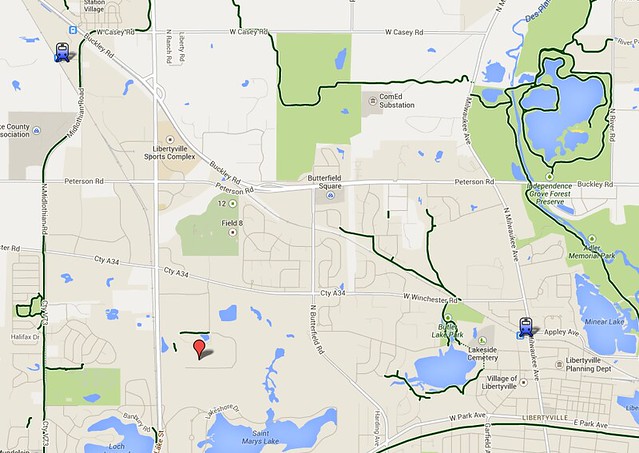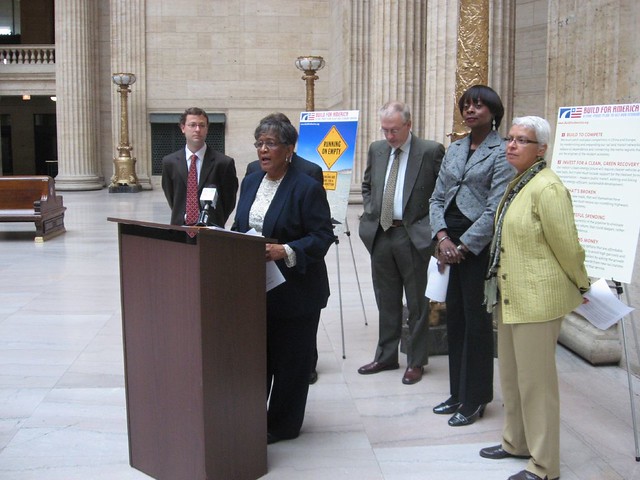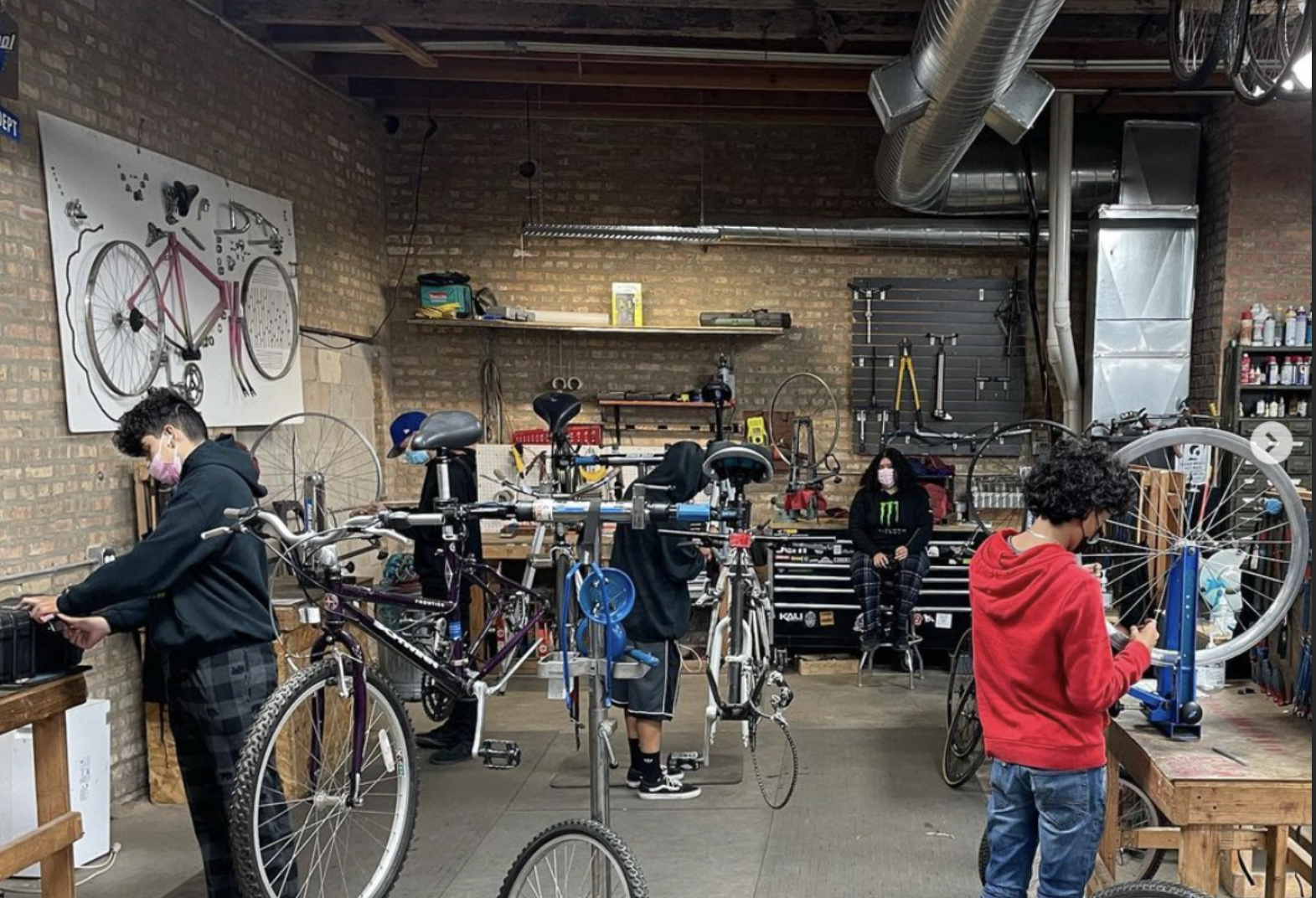Can Chicagoland Fix Its Sprawl Problem?
12:24 PM CDT on July 12, 2013
Earlier this week we wrote up the Center for Neighborhood Technology's report about how the Chicagoland region is falling behind other major American metro areas when it comes to focusing growth near transit stations. In Philadelphia, San Francisco, DC, and New York, most new housing is being built close to transit, but not in Chicago. Here, most growth is happening outside of walking distance to transit, and the "transit shed" is losing jobs faster than the car-dependent areas of the region.
Jacky Grimshaw, report co-author and vice president of policy at CNT, said she didn't expect to find Chicago to be an anomaly. "Having worked in other places and being in Chicago with our transit system, we expected to see positive patterns, but we saw something very different," she said. "The biggest surprise for us was that we were not developing around transit to the same degree as other legacy [train] systems."
Chicago's more sprawling development pattern increases traffic, limits people's transportation options, and imposes higher costs on households. So how can the region change course and focus development around train stations, while at the same time ensuring that households with lower incomes have access to the benefits of living near transit?
CNT's top recommendation is to create "TOD zones" -- areas within a half-mile of transit stations that would encourage transit-oriented development. Currently, some zoning rules "do not explicitly allow transit-oriented development," CNT writes, adding that "TOD should be allowed as a matter of right."
In TOD zones, mixed-use development would be allowed, and incentives would be created for higher-density development, perhaps by letting developers build more units per building when they site housing near transit.
In addition to TOD zones, CNT made the following recommendations:
Match jobs and transit
It would be more efficient to "expand transit services to job centers, site new employers in existing transit-served communities, and promote incentives to commute through transit, biking, or walking."
To some extent, however, this is outside the realm of public policy. "You can't stop [job sprawl], Steven, this is a free country," Grimshaw told me. She said the marketplace would fix this, though, and gave two examples of corporations that are changing their job centers to transit-served areas, plus one that didn't.
Sears is the company that moved away downtown, where 55 percent of employees took transit to work, to Hoffman Estates. "Not everyone followed, so they had to train new people, increasing their costs, and build a new transit system of vanpools and shuttles," said Grimshaw. "And now Sears has pretty much gone out of business."
Meanwhile, United Airlines moved from Elk Grove Village to downtown. Now Motorola is following suit, reversing an earlier decision to move to the suburbs.
"If people want to go and build in the middle of farm land, they're gonna do it," said Grimshaw. "Motorola did that, built their cellphone factory in Harvard." They then moved many of their software and computer engineers to Libertyville, she said, and now they are moving all 3,000 employees to the Merchandise Mart, with its own train station. It should be noted that all of these moves were partially influenced by tax breaks and credits.
Provide alternatives to car ownership
Even the most "dedicated" transit riders, CNT says, "are forced to buy cars to meet transportation needs" unfilled by transit. In response, the report authors say the region should beef up car-sharing services (which have been shown to reduce the number of cars per household), "build more extensive bicycle infrastructure, and establish more pedestrian-friendly streetscapes." These changes would also reduce driving for the households that still own cars.
CNT recommends that at least one free car-sharing parking space should be provided at transit stations and at apartment buildings with off-street parking. Additionally, it recommends that organizations operate their car fleets through car sharing services. The Chicago Department of Transportation, for instance, uses car-sharing vehicles as part of its fleet. The report also lists carpooling as a way to provide alternatives to car ownership, a function already facilitated by Pace.
Preserve affordable housing
Mixed-income housing should be expanded "through a combination of policies that prioritize housing assistance to TOD communities" and enforcement of any existing requirement, CNT writes.
I asked Grimshaw to comment on a development situation in Uptown. In the Wilson Red Line Station transit zone, JDL Development has proposed 842 units on the site of the former Columbus Maryville Academy (810 W Wilson). The developer has asked for $32 million in TIF money – property taxes diverted from other property owners. Alderman Cappleman's zoning and development committee is recommending that instead of using this subsidy to require the developer to build 20 percent of the units as affordable housing, 10 percent of the housing would be built as affordable and $8.4 million would go into the city's Low Income Housing Trust Fund.
This fund is used to subsidize rents for people earning less than 30 percent of the area median income or to subsidize a developer's mortgage loan. It doesn't have to be spent in transit sheds.
She said that a pot of money is a pot of money. If you want it to go to a specific thing, then you have to create rules for it. "Will the fee be used to incentivize developers to build where it's not attractive?" she said. "That's a good thing. If it's going to be used downtown, then that's a bad thing."
Parking minimums are not mentioned in the report, but Grimshaw mentioned that "for affordable units [in Chicago], the parking requirement is [already] eliminated." Parking mandates do drive up the cost of other housing, however. Parking is an extremely expensive addition to development and Chicago requires a heavy amount of car parking spaces, the cost of which is often added to, or "bundled" with, the price of housing units. The Chicago Metropolitan Agency for Planning recommends the simple change of unbundling this cost so that renters and buyers can choose not to buy it.
In the city of Chicago, developers can halve their parking requirements if they build within 600 feet of a train station. This radius is too small and should be increased. Better yet, the parking minimums should be reduced to zero for all developments.
Stay in touch
Sign up for our free newsletter
More from Streetsblog Chicago
It’s electric! New Divvy stations will be able to charge docked e-bikes, scooters when they’re connected to the power grid
The new stations are supposed to be easier to use and more environmentally friendly than old-school stations.
Communities United: Reports of Bikes N’ Roses’ death have been greatly exaggerated
According to the nonprofit shop's parent organization, BNR has paused its retail component, but is still doing after-school programming and looking for new staff.





